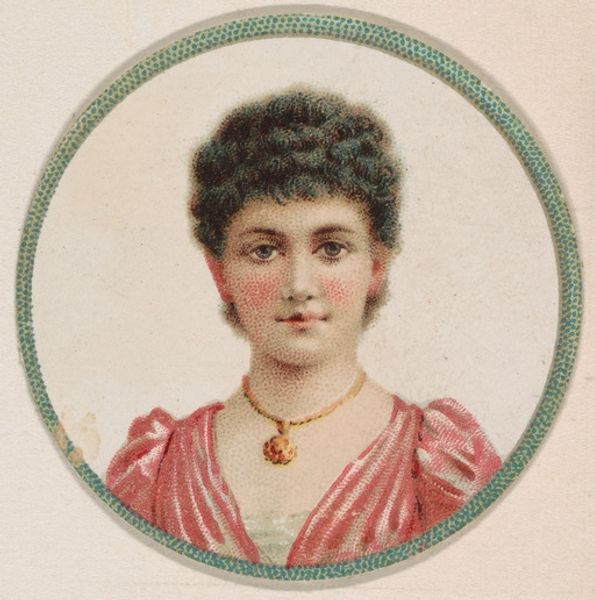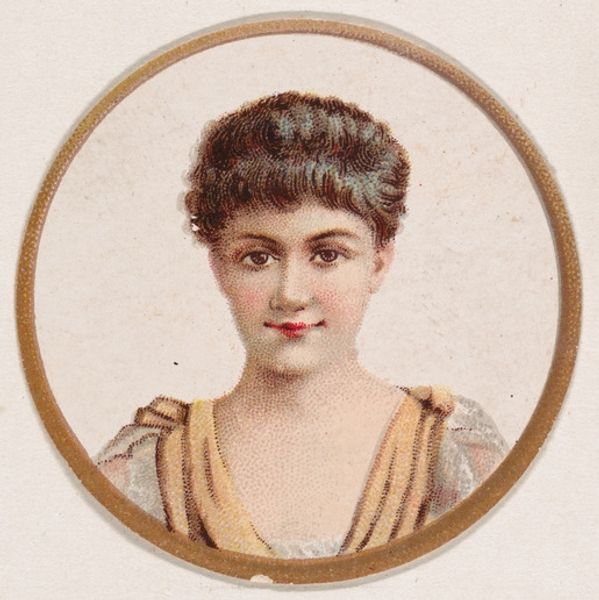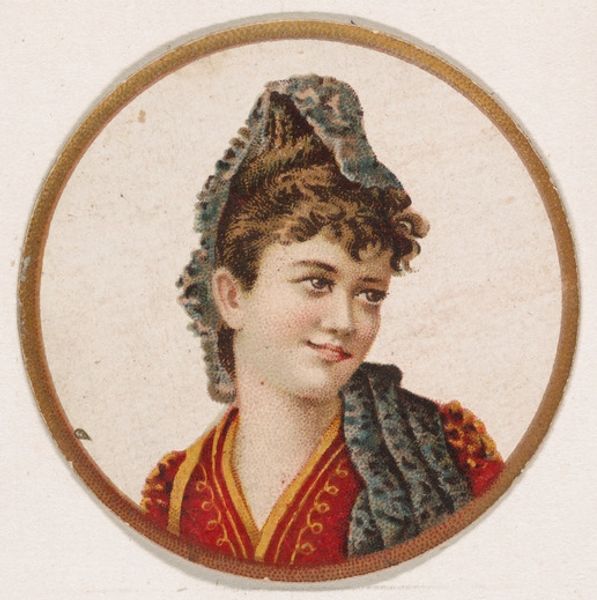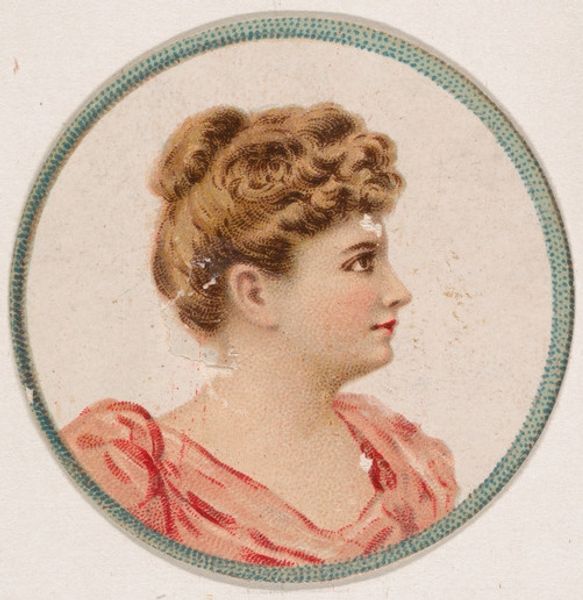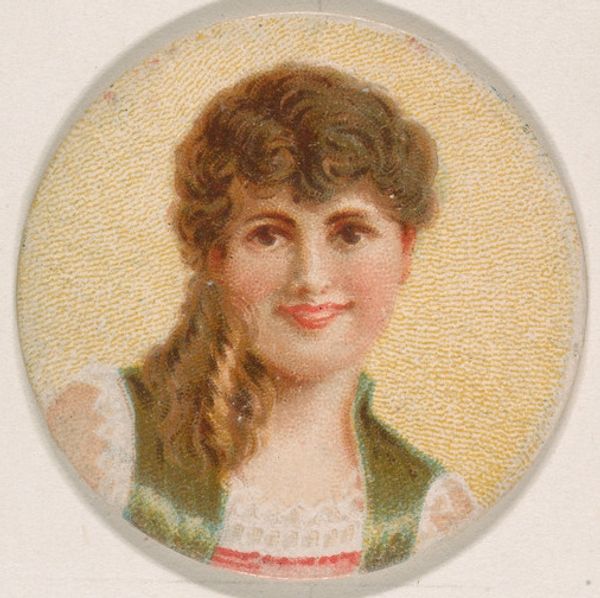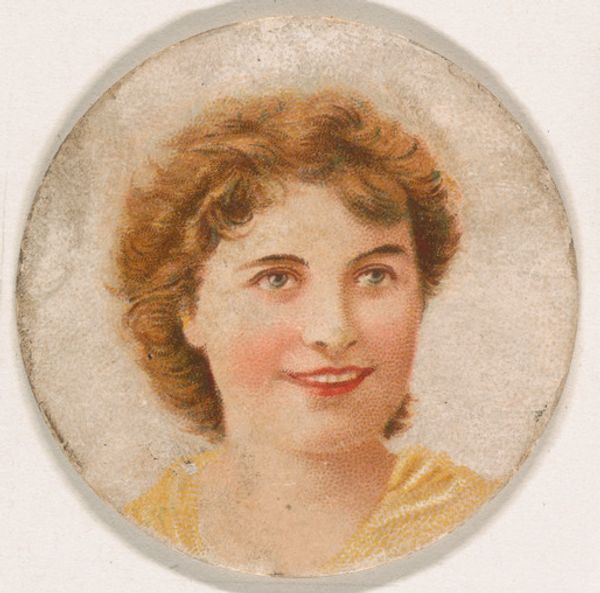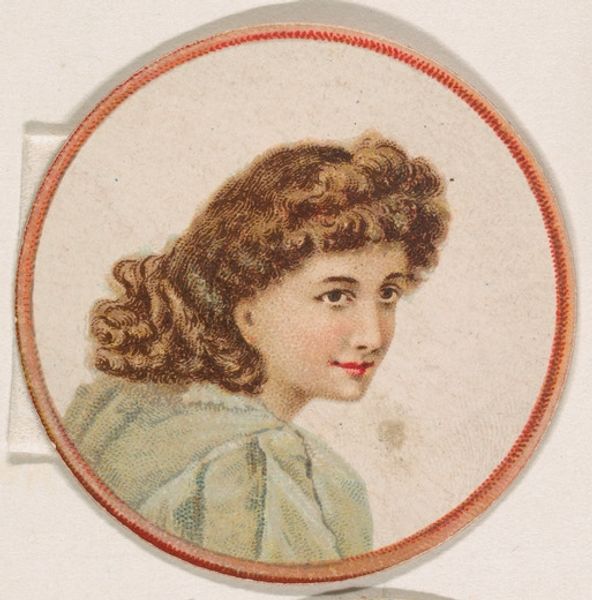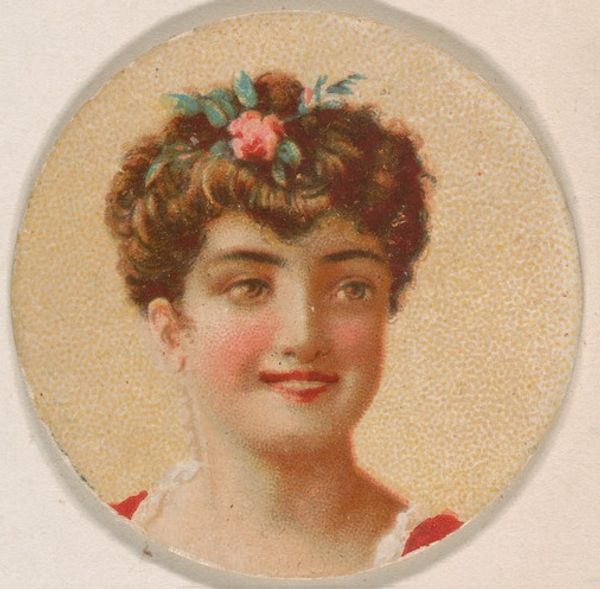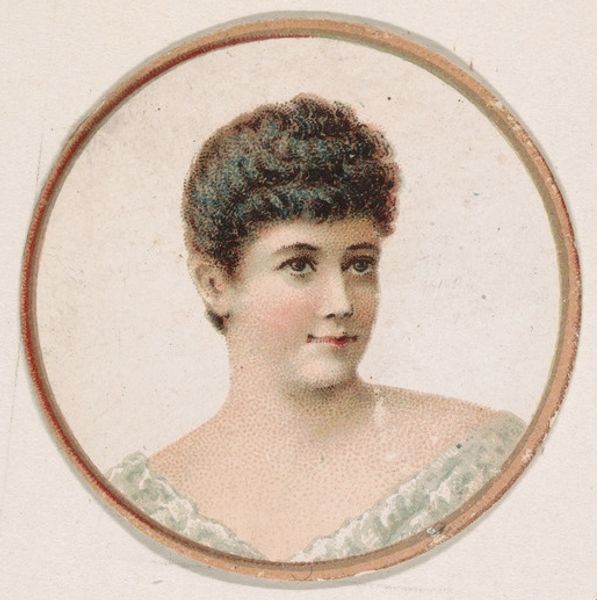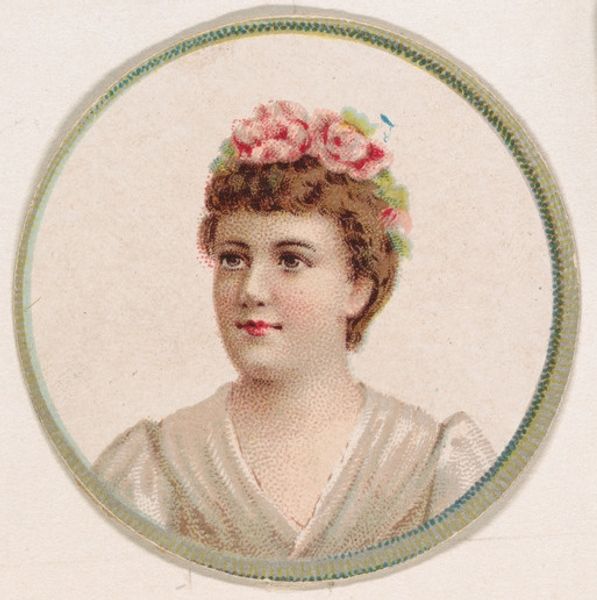
Portrait of woman, from the Novelties series (N228, Type 2) issued by Kinney Bros. 1889
0:00
0:00
graphic-art, print
#
portrait
#
graphic-art
# print
Dimensions: Sheet (Round): 1 9/16 × 1 9/16 in. (4 × 4 cm)
Copyright: Public Domain
Curator: Here we have a color lithograph produced in 1889 by Kinney Brothers Tobacco Company titled, "Portrait of woman, from the Novelties series." Editor: The coloring strikes me as rather curious; a muted, somewhat rosy softness prevails. It’s quite charming, though—almost like a tinted photograph, with its hazy aesthetic. Curator: Precisely! Consider how the artist utilizes closely packed stipples, a dense pattern of dots, to create a seamless, photographic likeness and tonality within the face, all contained by a sharply defined border. Editor: It’s difficult not to consider her lei. Beyond its obvious beauty, leis represent affection, welcoming and love. Its presentation suggests that the image maker aimed to evoke an exotic charm in a burgeoning, global consumer market. Curator: Yes, its incorporation, along with her dark flowing hair and idealized facial features, speaks volumes about late nineteenth-century Japonisme, itself deeply connected to consumer culture at that time. These novelty cards were explicitly meant to enchant the viewer through an assimilation of foreign sensibilities. Editor: Do you believe the floral element signifies a genuine celebration of Hawaiian or other Pacific Islander cultures, or is it simply deployed to tantalize consumers, divorced from its cultural significance? Curator: The reading isn't always clear-cut. In instances such as this, these items offer potent reflections on intercultural exchanges. Even if it risks reducing cultural identities to easily digestible tokens, we have to consider the role images have in broadening cultural awareness. Editor: I think you are correct; the value exists not only in the art itself but in the complex exchange it inspired between cultures, whether authentic or constructed. Curator: It reminds us to investigate the narratives of cross-cultural understanding embedded in even seemingly straightforward portraits. Editor: An artifact as seemingly minor as this unveils broader histories of exoticism, commodification, and early global trade practices, indeed!
Comments
No comments
Be the first to comment and join the conversation on the ultimate creative platform.
